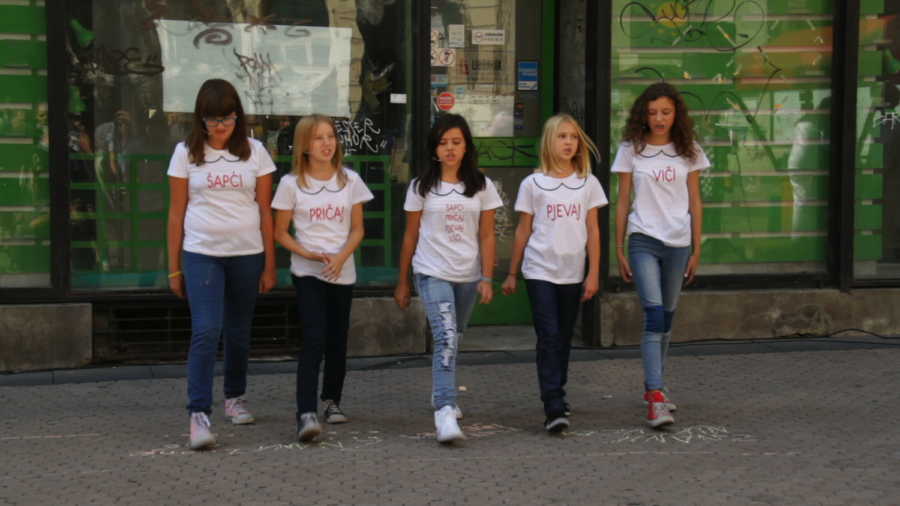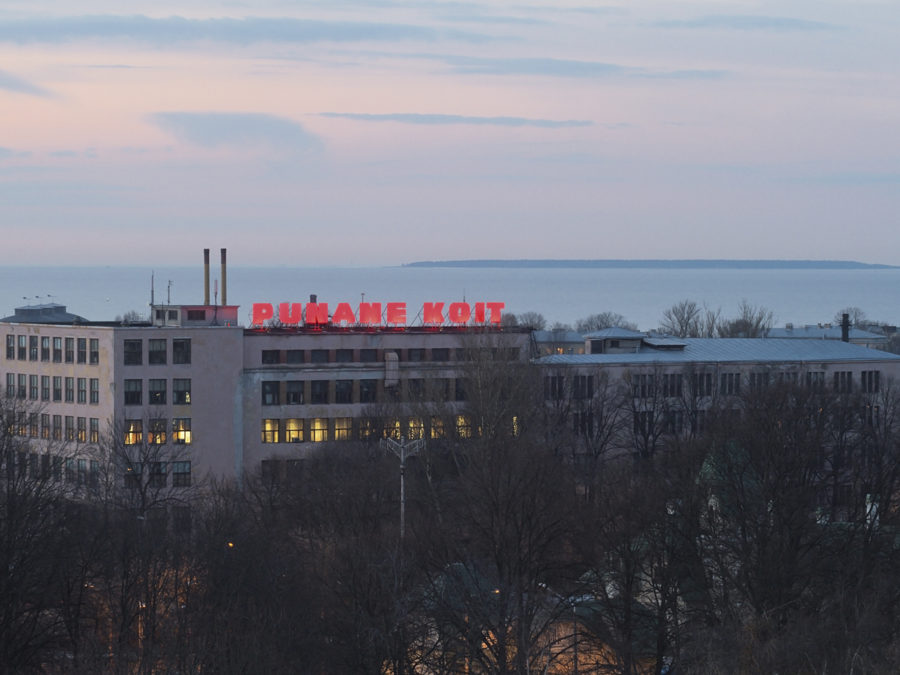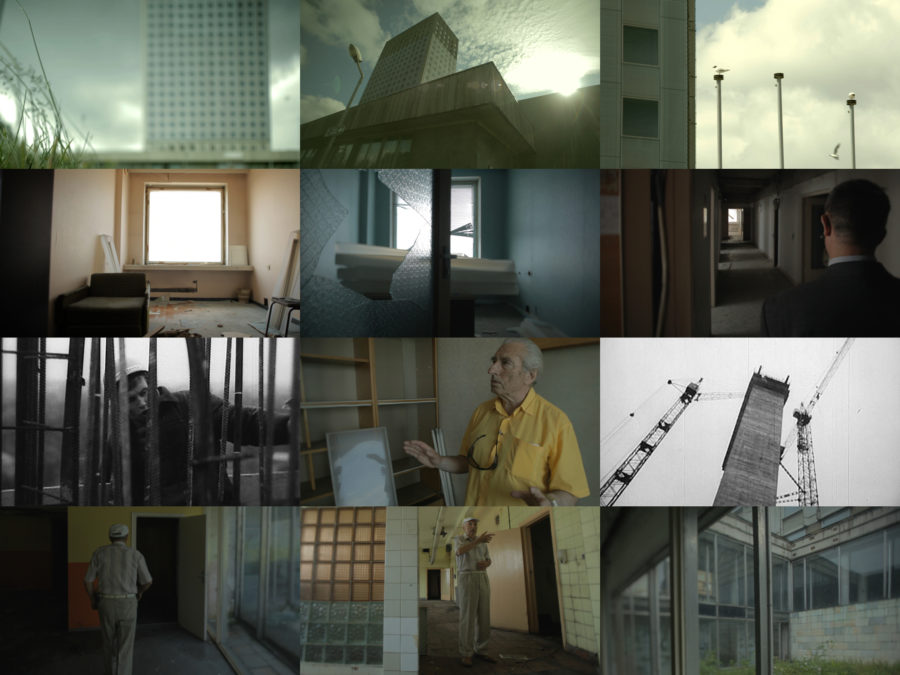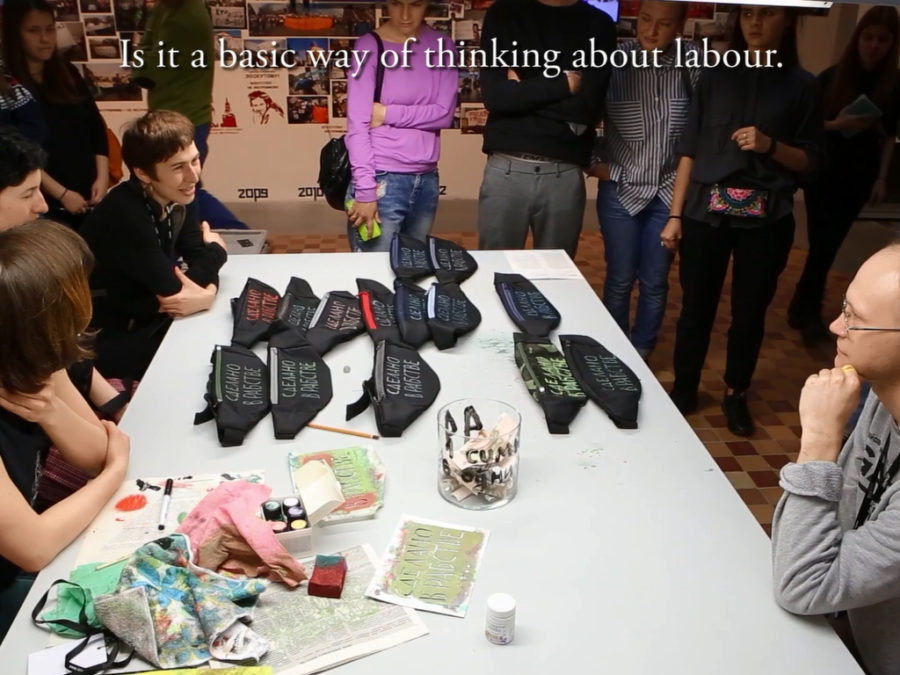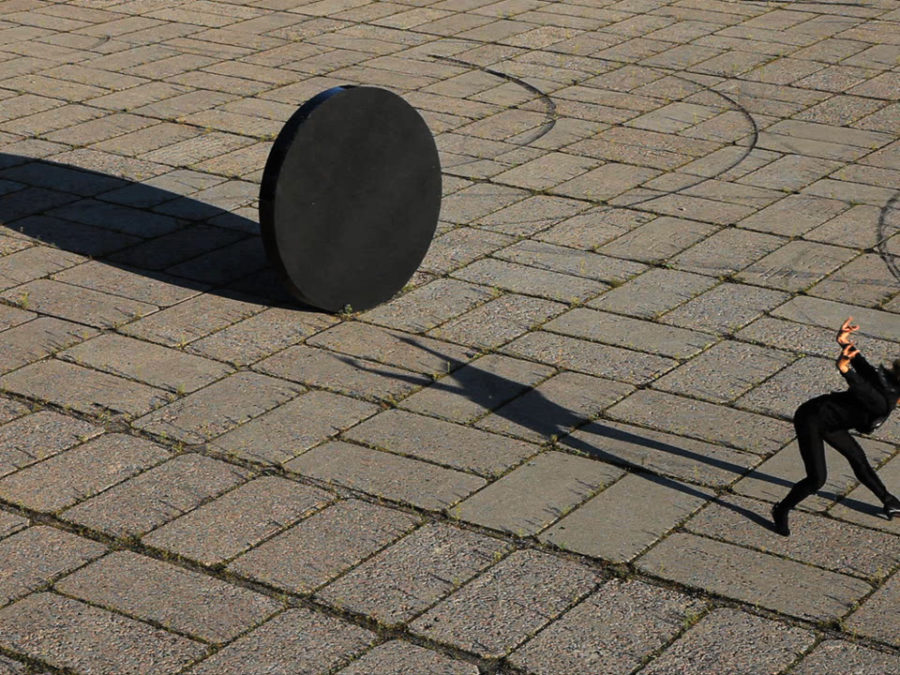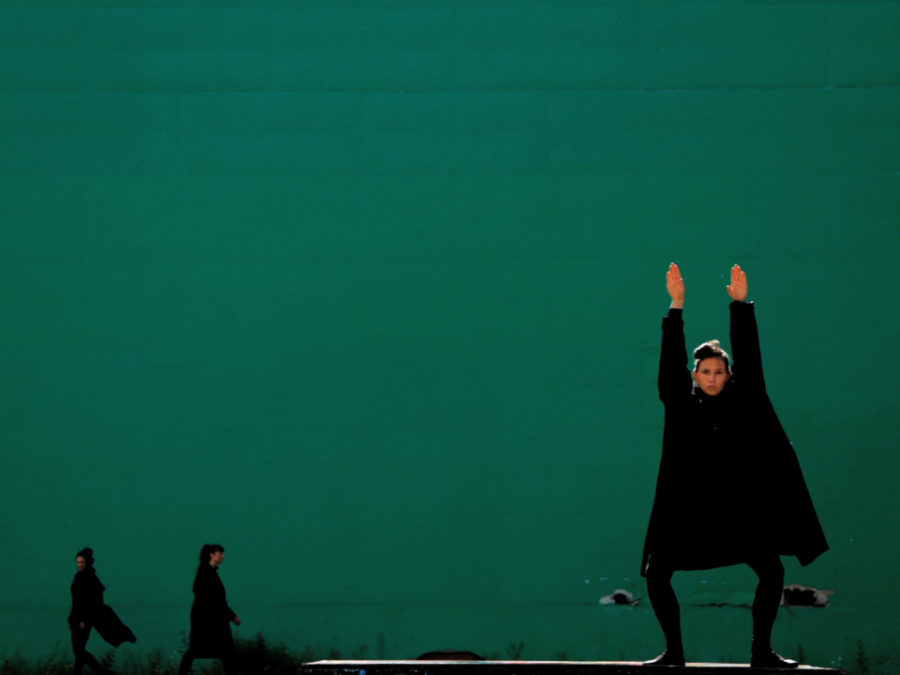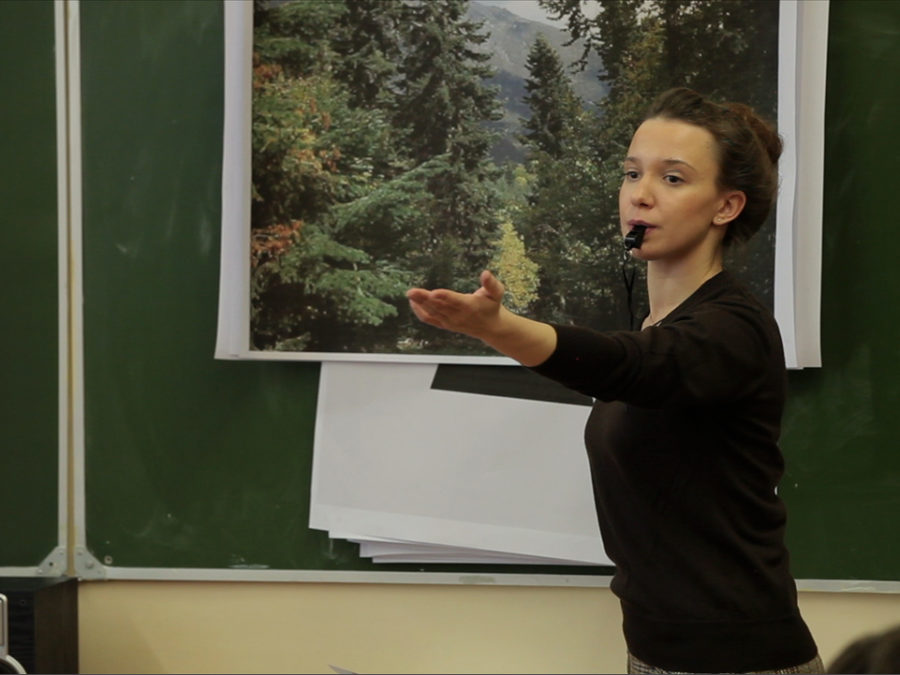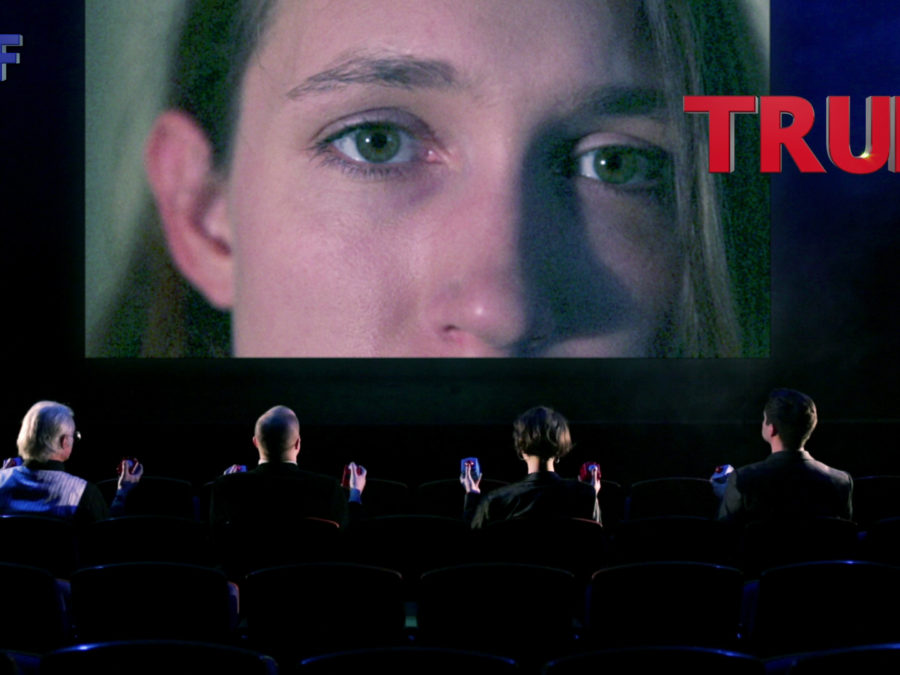This piece explores the ways in which class and gender divisions in society can be articulated by means of music. To do so, the artist collaborated with local activists and independent journalists to compose protest songs, with the aim of disclosing minority positions in society. In her piece, the artist endorses various aspects of the same struggle – including disenfranchised workers, young people who have lost their right to education, and persons who do not fit the heterosexual norm – using music as a tool to find new ways of mobilization and to expand the horizon of political struggle.
The work features a performance in public space with girls ten to twelve years of age who play and sing a children’s song with protest lyrics. Through this, the artist aims to critique the common stereotype of children being ignorant of socio-political processes. It also challenges gender norms, which still see girls as having to conform to traditional female (pre)occupations linked to the private sphere. The artistic procedure in which the ‘weak’ – children, moreover girls – take a stand for the other marginalized groups of society subverts the usual positions, tackling the issues of the established yet often invisible mechanisms of dominant ideology. The work promotes equality and public engagement in decision-making concerning public issues. It also has an outspoken educational character, since the preparation process involved girls discussing the aforementioned issues.
Željka Blakšić aka Gita Blak is an artist who currently lives and works in New York. Her inspiration often stems from the sub-culture of 1990s era Croatia, when punk, anarcho, and eco movements were witnessing a renewal. Resistance was manifest in the gathering of and cooperation between different alternative social groups. This experimental environment became a university of rebellion – a key force that gave voice to new expressions of democracy, justice, common values, and free speech. Her current work reflects her long-term collaborations with musicians, choirs, and collectives. She has recently shown her work in El Museo de Los Sures, NY; Recess, NY; Museum of Modern Art, NY; Artizen Cluj, Romania; BRIC Contemporary Art Gallery, NY, among others.
